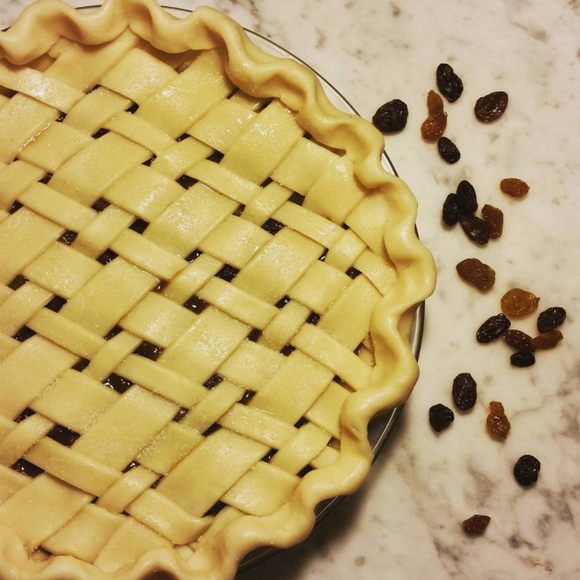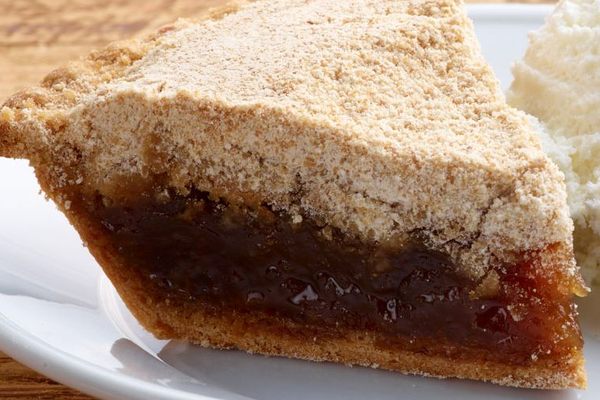Death and raisins share one essential feature: neither belongs to any one season. Eighteenth-century Amish and old-order Mennonites of Pennsylvania were no strangers to the harsh realities of sudden loss, but amidst tragedy, raisins were there. The preserved grapes were a pantry staple—shelf-stable and ready-to-eat throughout the year. In times of emergencies, wives turned to the ingredient known as rosine in their native German. They whipped up raisin pies, which traveled well and required no peeling or pitting, on various occasions, but their consistent presence at funerals led to the nickname “funeral pie.”
Rosine pie was the closest thing Amish people had to fast food. Friends and neighbors prepared the pie quickly, left it out without fear of spoilage, and then focused their attention on more pious matters. Some bakers turned it into a milky, custard-like filling, while others mimicked the texture of mincemeat. Both sticky pastes went straight into a double-crust, usually in lattice form. Despite evolving technology, Amish communities—steadfast in their devotion to tradition—have continued baking the same raisin pies well into the 21st century.
Often, a funeral pie accompanied the meal served during a wake, when mourning families were supposed to be distracted by sugary comfort. Some say the dish’s overwhelming sweetness made it difficult for one to think, temporarily relieving the aggrieved. Some pie filling is meant to fill more than just pie holes, even if only for a moment.
Where to Try It
-
Miller’s Smorgasbord
2811 East Lincoln Highway, Ronks, Pennsylvania, 17572, United StatesOutstanding prix fixe buffet featuring Pennsylvania Dutch cuisine!
Written By
 rachelrummel
rachelrummel
Sources
- whatscookingamerica.net/History/PieHistory/FuneralPie.htm
- thewellseasonedcook.blogspot.com/2007/03/sweet-sorrow-rosina-pie.html
- www.epicurious.com/recipes/food/views/raisin-pie-390114
- www.papergreat.com/2013/01/pennsylvania-dutch-recipe-for-funeral.html
- www.yorkdispatch.com/story/life/food/2017/05/16/resurrecting-funeral-pie/101761588/
- books.google.com/books?id=GTmyYxVzPKsC&pg=PR10&dq=amish+funeral+pie&hl=en&sa=X&ved=0ahUKEwiy89qYoaHaAhULPN8KHY_bAJ8Q6AEIJzAA#v=onepage&q=amish%20funeral%20pie&f=false
- books.google.com/books?id=gJMLyBwY5j4C&pg=PA140&dq=amish+funeral+pie&hl=en&sa=X&ved=0ahUKEwiy89qYoaHaAhULPN8KHY_bAJ8Q6AEIQTAE#v=onepage&q=amish%20funeral%20pie&f=false











